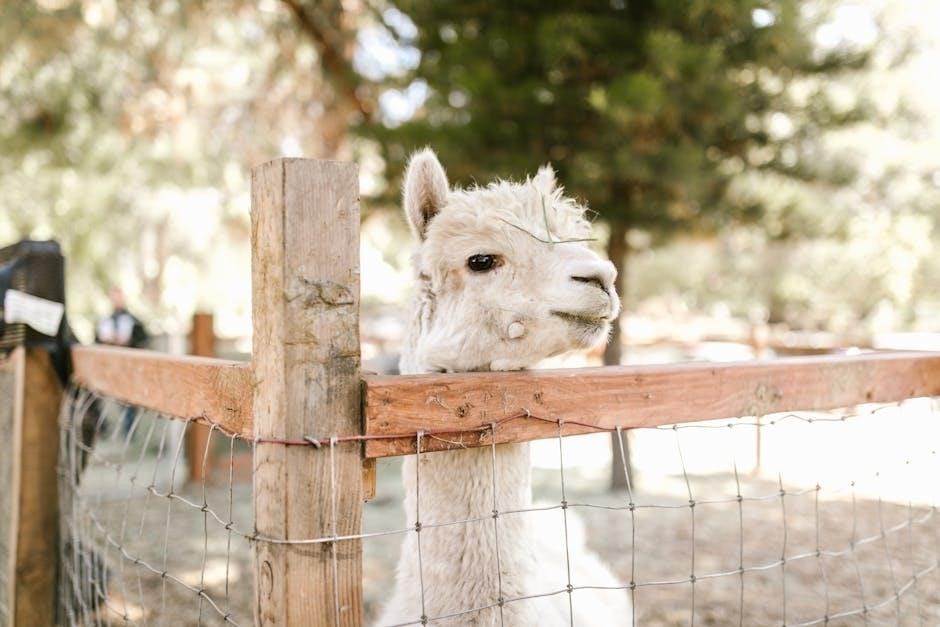Alpaca wool is renowned for its softness, warmth, and lightweight properties, making it a popular choice for high-quality garments. Proper washing is crucial to preserve its delicate fibers and maintain its texture. Gentle care prevents felting, shrinking, and damage, ensuring longevity. Avoid hot water and harsh detergents to protect this precious material. Understanding these basics will help you keep your alpaca wool items in pristine condition.
Overview of Alpaca Wool Fibers
Alpaca wool is a natural, soft, and lightweight fiber prized for its warmth and durability. Unlike sheep’s wool, it contains no lanolin, making it hypoallergenic and easier to care for. Alpaca fibers come in two main types: Huacaya and Suri, each with unique textures. Huacaya fibers are crimpy and fluffy, while Suri fibers are long and silky. Both types are renowned for their softness, warmth, and ability to wick moisture, making alpaca wool ideal for garments that require both comfort and performance.
Why Proper Washing is Essential for Alpaca Wool
Proper washing is vital to maintain the integrity and longevity of alpaca wool. Improper techniques can lead to felting, shrinkage, or fiber breakage. Using cold water and gentle detergents prevents damage and preserves the natural softness. Over-washing can degrade the fibers, reducing their insulating properties. Gentle care also avoids color bleeding in dyed items. By following proper washing methods, you ensure your alpaca wool remains soft, vibrant, and durable for years to come, retaining its luxurious feel and aesthetic appeal.

Materials and Tools Needed for Washing Alpaca Wool
- A large basin or sink
- Mild, wool-specific detergent
- Soft, clean towels
- A lint brush or soft-bristle brush
- Cold water
- Optional: Mesh laundry bag for machine washing
These tools ensure gentle care and prevent fiber damage during the washing process.
Gentle Detergents Suitable for Alpaca Wool
Use mild, non-biological detergents specifically designed for wool or delicate fabrics. Avoid harsh chemicals, enzymes, or bleach, as they can damage alpaca fibers. Opt for pH-neutral detergents to maintain the wool’s natural softness. Some detergents contain lanolin, which can enhance softness and protect fibers. Always check the label for wool-safe certification to ensure compatibility. Using the right detergent prevents felting and preserves the garment’s texture and color.
Recommended Washing Tools: Basins, Towels, and Brushes
Large, clean basins or sinks are ideal for soaking alpaca wool to prevent stretching. Use absorbent, lint-free towels to gently blot excess moisture without rubbing. Soft-bristle brushes or lint brushes help restore the fabric’s nap and remove surface dirt. These tools minimize damage and ensure the wool retains its softness and texture. Regular brushing also prevents pilling and keeps the garment looking fresh and well-maintained.
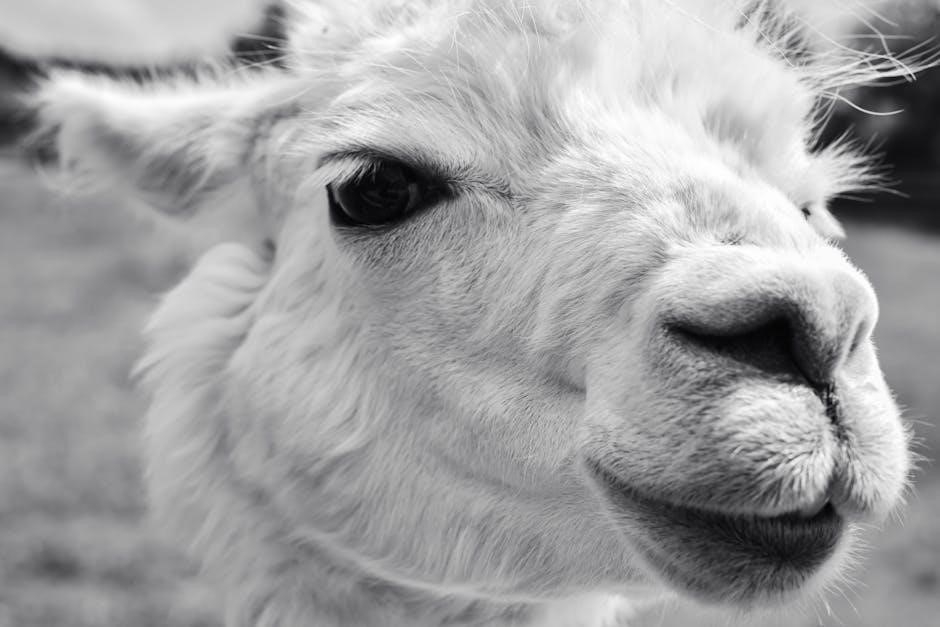
Hand Washing Instructions for Alpaca Wool
Hand washing is the gentlest method for alpaca wool. Use cold water, mild detergent, and gentle agitation to clean without damaging fibers. Reshape while wet for best results.
Step 1: Prepare the Garment for Washing
Before washing, inspect the garment for stains or debris. Turn it inside out to protect the outer fabric. Remove any buttons or accessories that could cause damage. Gently brush the fabric to remove loose dirt or lint, ensuring even cleaning. Check the care label for specific instructions, as some alpaca wool items may require special handling. This preparation ensures a safe and effective washing process.
Step 2: Soaking and Cleaning the Fabric
Submerge the garment in a clean basin of cold or lukewarm water mixed with a small amount of mild detergent. Gently agitate the water to distribute the soap evenly. Allow the fabric to soak for about 15-20 minutes to loosen dirt. Use your hands to gently work the soap into the fabric, focusing on stained areas if needed. Avoid wringing, twisting, or scrubbing, as this can damage the delicate fibers. Rinse thoroughly to remove all soap residue before proceeding.
Step 3: Rinsing and Removing Excess Water
Rinse the garment thoroughly under fresh, cold water to remove all soap residue. Gently squeeze out excess water without wringing or twisting. Lay the item flat on a clean towel, reshaping it to its original dimensions. Roll the towel gently to absorb moisture, then transfer to a dry towel. Avoid direct heat or pressing, as this can damage the fibers. Allow the garment to air dry naturally, ensuring it retains its shape and softness.
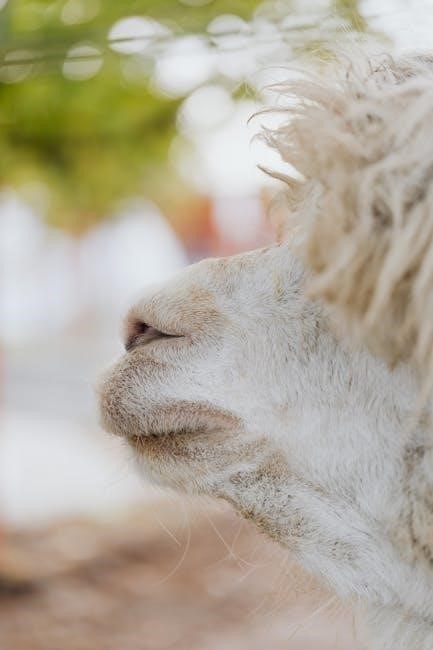
Drying Techniques for Alpaca Wool Garments
Air drying is essential for alpaca wool. Lay garments flat, away from direct heat, to maintain shape and quality. Use clean towels to absorb excess moisture.
Importance of Air Drying and Reshaping
Air drying is crucial for preserving alpaca wool’s texture and shape. Lay garments flat on a clean, dry surface, away from direct sunlight and heat. Reshape the item to its original form while damp to prevent stretching or distortion. Avoid hanging, as it may cause elongation. Use clean towels to gently blot excess moisture, ensuring the fabric remains even. Proper drying ensures softness and longevity, maintaining the natural qualities of alpaca wool.
How to Lay Flat and Avoid Direct Heat
To prevent shrinkage and damage, lay alpaca wool garments flat on a clean, dry surface. Avoid direct sunlight and heat sources like radiators or heaters. Smooth out wrinkles gently while damp to maintain shape. Use a breathable material, like a towel, to absorb moisture without pressing down. Ensuring even air circulation prevents musty odors. This method preserves the fabric’s natural texture and appearance, ensuring your alpaca wool remains soft and intact for years to come.

Storage Tips for Alpaca Wool Items
Store alpaca wool in a cool, dry place, folded in breathable containers like cloth bags. Avoid direct sunlight and moisture to prevent damage and prolong lifespan.
Best Practices for Storing Clean Garments
Proper storage is essential to maintain the quality of alpaca wool. Store clean garments in a cool, dry place away from direct sunlight and moisture. Use breathable containers like cloth bags or natural fiber boxes to allow airflow. Avoid plastic bags, as they can trap moisture and cause damage. Fold garments gently to prevent creasing and stretching. Ensure items are completely dry before storing to prevent mildew. For long-term storage, consider using acid-free tissue paper to preserve shape and texture.
Preventing Damage and Prolonging Lifespan
To prevent damage and extend the life of alpaca wool, avoid exposing it to direct sunlight, which can cause fading. Use a laundry bag during washing to protect against friction and snagging. Avoid over-washing, as this can weaken fibers. Brushing the fabric regularly helps maintain its texture and prevents pilling. Store items in a cool, dry environment to avoid moisture damage. Following these care practices ensures your alpaca wool remains soft, vibrant, and durable for years to come.
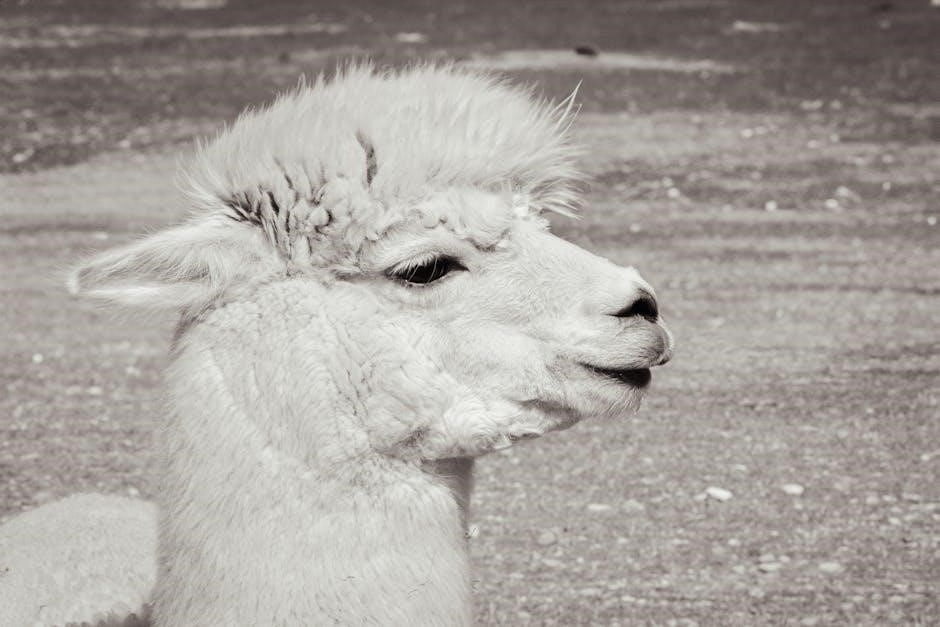
Machine Washing Instructions for Alpaca Wool
Place the alpaca wool garment in a mesh laundry bag and wash on a gentle cycle with cold water. Use a wool-safe detergent for best results.
When and How to Use a Washing Machine
For machine washing, place the alpaca wool garment in a mesh laundry bag to protect it from friction. Use a gentle cycle with cold water and a wool-safe detergent. Avoid using biological or enzyme-based detergents, as they can damage the fibers. Select the delicate or woolen setting on your washing machine to ensure minimal agitation. Never use hot water, as it can cause felting or shrinking. Check the care label for specific instructions, as some alpaca wool blends may require special handling.
Recommended Settings and Precautions
When using a washing machine, select the gentle or delicate cycle with cold water (10–20°C). Place the garment in a mesh laundry bag to prevent snagging. Use a small amount of wool-safe detergent, avoiding enzymes or biological agents. Ensure the machine is set to a slow agitation cycle to minimize friction. Avoid overloading the machine, as this can cause stretching or damage. Always check the care label for specific instructions, especially for blended fabrics. Proper settings help preserve the softness and integrity of alpaca wool.
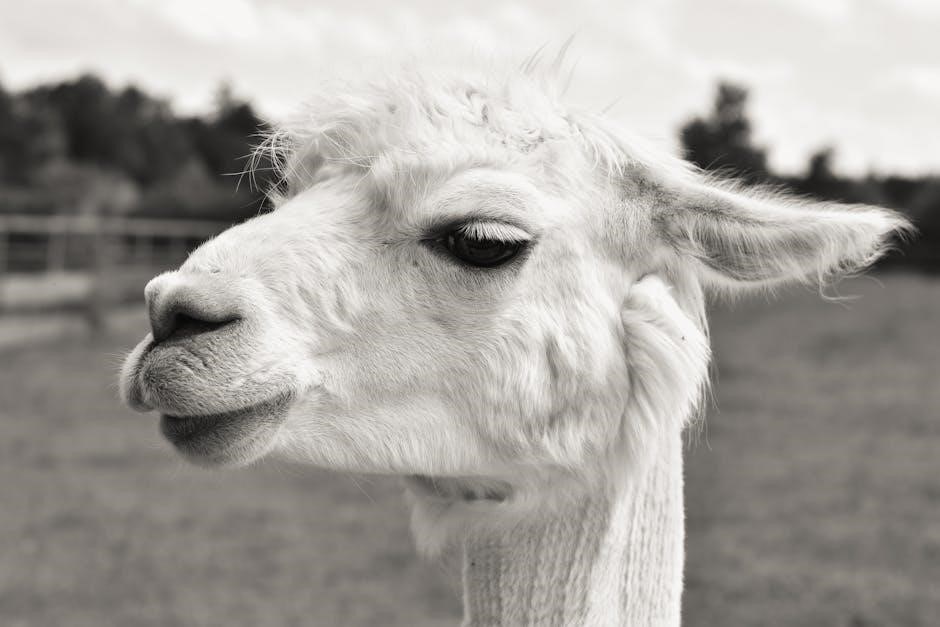
Special Care for Colored or Dyed Alpaca Wool
Colored alpaca wool requires extra attention to prevent fading or bleeding. Use cold water and color-safe detergents to maintain vibrancy. Wash dyed items inside out in a laundry bag to protect the fabric and minimize color transfer.
Managing Color Bleeding and Fading
Colored or dyed alpaca wool may bleed or fade during washing. To minimize this, use cold water and a color-safe detergent. Wash dyed items separately or with similar colors to prevent transfer. Gently agitate the water to avoid excessive friction. Avoid soaking colored garments for extended periods, as this can weaken the dye. For especially vibrant colors, consider using a vinegar rinse to lock in the dye. Always air dry away from direct sunlight to preserve color vibrancy and prevent fading.
Using Color-Safe Detergents and Laundry Bags
Use mild, color-safe detergents specifically designed for wool to protect dyed alpaca fibers. Avoid harsh chemicals or enzymes that can damage the material. Place colored garments in mesh laundry bags to prevent snagging and reduce friction during washing. This extra layer of protection helps maintain the integrity of the fibers and prevents color transfer. Always opt for gentle cycles and cold water to ensure the colors remain vibrant and the fabric stays intact. These precautions extend the life of your alpaca wool items.
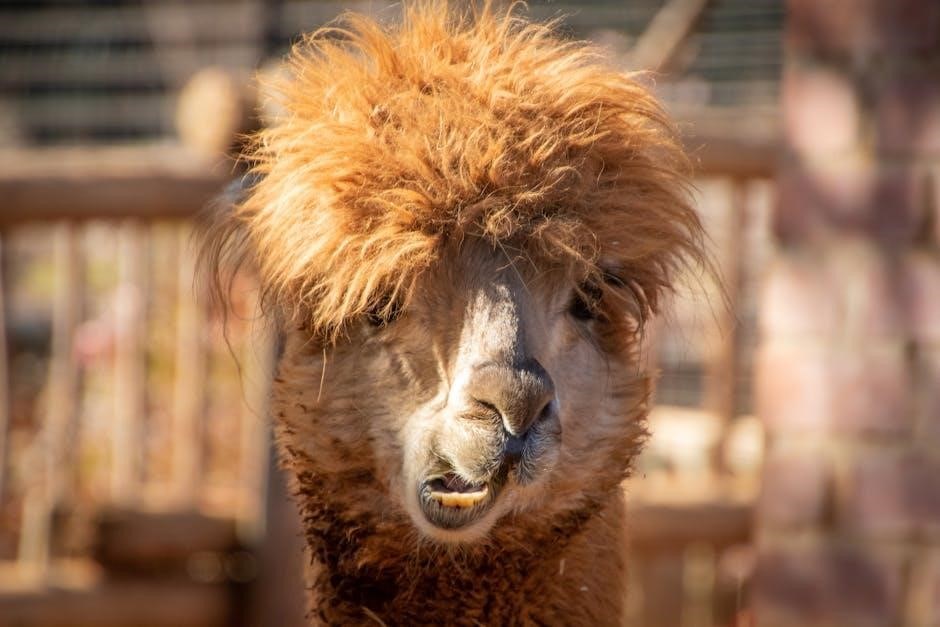
Stain Removal and Spot Cleaning
Act quickly on stains to prevent them from setting. Gently blot spills with a clean cloth to absorb excess moisture without rubbing the fabric harshly.
Common Stains and How to Treat Them
Common stains like food, wine, and ink require immediate attention. Blot spills gently with a clean cloth to absorb excess moisture. For stubborn stains, apply a small amount of mild detergent directly to the spot, working from the outside in. Avoid rubbing, as it can damage fibers. Rinse with cold water and allow the garment to air dry. Never use harsh chemicals or hot water, as they can harm alpaca wool fibers. Always test a small, inconspicuous area first.
Gently Removing Spots Without Damaging Fibers
Gently removing spots requires careful attention to avoid damaging alpaca wool fibers. For small stains, blot with a clean, damp cloth to absorb moisture. Apply a mild detergent directly to the spot, gently massaging with fingertips. Avoid harsh chemicals or excessive rubbing, as this can cause felting or fiber breakage. Rinse with cold water and reshape the garment while wet. Air dry flat, away from direct heat, to maintain softness and texture. Always test a small area first to ensure colorfastness.
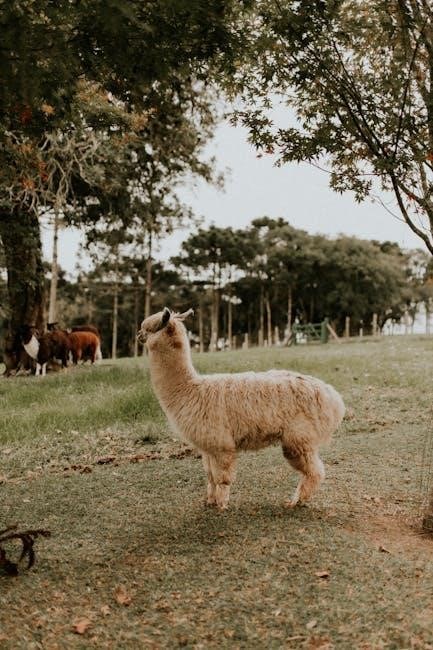
Brushing and Maintenance of Alpaca Wool
Regular brushing removes surface dirt and revives the nap. Use a lint brush or whisk for napped fabrics and a damp sponge for finer ones. Proper maintenance ensures softness and prevents matting, extending the garment’s lifespan while maintaining its luxurious feel and appearance.
Why Brushing is Important for Fabric Health
Brushing alpaca wool is essential for maintaining fabric health. It removes loose dirt and prevents matting, which can damage fibers. Regular brushing restores the nap, ensuring softness and texture remain intact. This simple practice also prevents pilling and keeps the fabric looking vibrant. By investing a few minutes in brushing, you protect your alpaca wool garments from wear and tear, ensuring they stay luxurious and comfortable for years to come.
Choosing the Right Brushes for Alpaca Wool
Choosing the right brush for alpaca wool is crucial for maintaining its quality. A soft-bristled brush or a lint brush is ideal for gently removing dirt and restoring the fabric’s natural texture. For heavier napped fabrics, a whisk brush works best, while a damp sponge is perfect for finer knits. Always brush in the direction of the fibers to avoid damage. Regular brushing keeps the wool healthy and looking vibrant, ensuring longevity and softness.
Proper care ensures alpaca wool remains soft and durable. Always hand wash with mild detergent, dry flat, and store in cool, dry places. Follow these tips for longevity.
Key Takeaways for Washing Alpaca Wool
- Always hand wash alpaca wool with cold water and a mild detergent to preserve its softness and texture.
- Avoid direct heat and machine washing unless using a gentle cycle with a mesh laundry bag.
- Dry garments flat, reshaping them to maintain their original form.
- Store clean alpaca wool in a cool, dry place to prevent damage.
- Minimize washing frequency to extend the lifespan of your alpaca wool items.
Ensuring Longevity and Softness of Alpaca Wool
To maintain the softness and longevity of alpaca wool, gentle care is essential. Hand wash items in cold water with a mild detergent, avoiding harsh chemicals or enzymes. Gently reshape garments while damp and air dry away from direct heat. Regular brushing helps restore the nap and prevent pilling. Store alpaca wool in a cool, dry place, folded or in breathable containers, to protect against moisture and pests. Proper care ensures your alpaca wool remains soft and luxurious for years.
